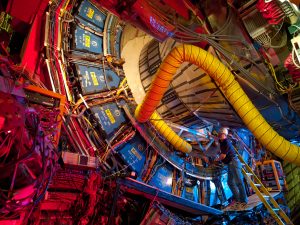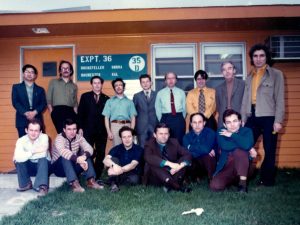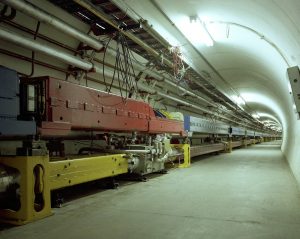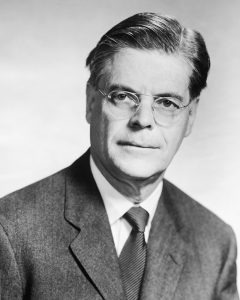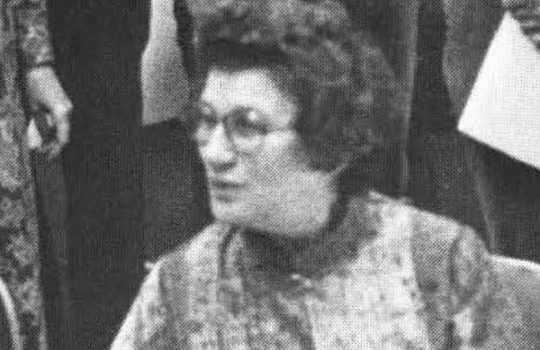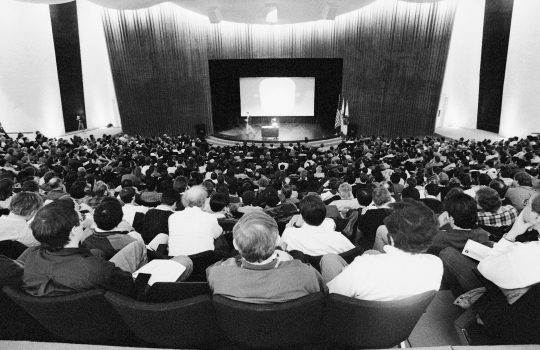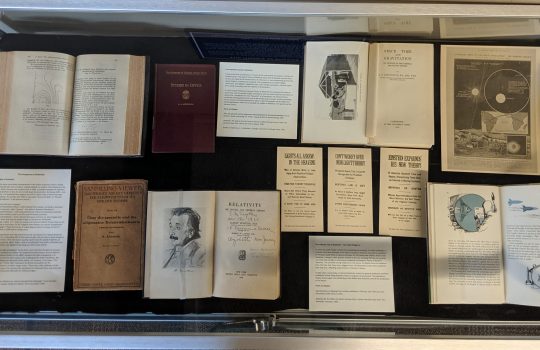As we enter the second month of Fermilab’s 50th year, we look back on Robert Wilson assuming the lab’s first directorship and the lab’s first experiment, along with other memorable milestones.
Feb. 5, 1999: Evidence of CP violation in neutral B mesons
On this day, CDF scientists reported evidence of CP violation in neutral B mesons — a phenomenon that could help explain why matter predominates in our universe while antimatter is nearly absent.
Feb. 12, 1972: First experiment
Experiment E-36, Small Angle Proton-Proton Scattering, began testing equipment in the lab’s newly achieved 100-GeV beam in the Internal Target Area on this day, marking the beginning of the lab’s experimental program. The E-36 experimenters came from the National Accelerator Laboratory, the Joint Institute for Nuclear Research (Dubna, U.S.S.R.), the University of Rochester (Rochester, New York) and Rockefeller University (New York City), making it a model of cooperation between Americans and Soviets at a time when Cold War tensions still ran high.
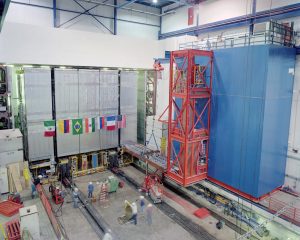
The DZero detector is visible at the far end of the hall behind the flags. The blue tower is the mobile counting house where all the cables from the detector are routed to. Both moved in unison with each other. Once the detector was in place, a concrete blocks were stacked to cover opening, providing shielding. Some of the blocks are visible on either side of the detector.
Feb. 14, 1992: DZero detector placed in Tevatron
Named for the section of the Tevatron ring where it was installed, the DZero detector was rolled into place on this day. By this day, the DZero scientific collaboration had grown to about 300 members. First collisions were seen three months later, and the experiment began taking data in September 1992.
Feb. 15, 1984: Tevatron achieves proton beam energy of 800 GeV
With the achievement of an 800-GeV operating beam energy, on this day the Tevatron regained the lead as the highest-energy fixed-target laboratory in the world. An 800-GeV ramp was set up in the Tevatron and achieved by 6:30 p.m. The Tevatron then accelerated and extracted beam to 800 GeV by 10:54 p.m. The beam marked the opening of a new energy frontier in high-energy physics.
Feb. 28, 1967: Robert Wilson becomes lab director
On Feb. 28, 1967, Robert R. Wilson, director of the Laboratory for Nuclear Studies at Cornell University, agreed to direct the planned National Accelerator Laboratory. Wilson was born in Frontier, Wyoming, and spent time on his family’s cattle ranch as a child. He also immersed himself in books from his local library and experimented in his mother’s attic, a background which nurtured his independence and his love of the challenge of the frontier. He received his Ph.D. from the University of California, Berkeley, and became the youngest group leader on the Manhattan Project. He was also an avid sculptor, and his artistic sensibilities would shape Fermilab’s unique aesthetic. In 1987, on the occasion of the lab’s 20th anniversary, he would write that his “fantasy of a utopian laboratory clearly required a setting of environmental beauty, of architectural grandeur, of cultural splendor.”

